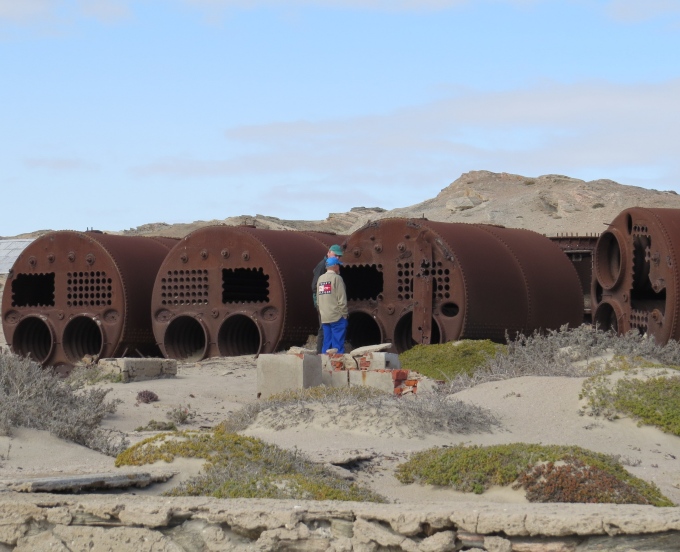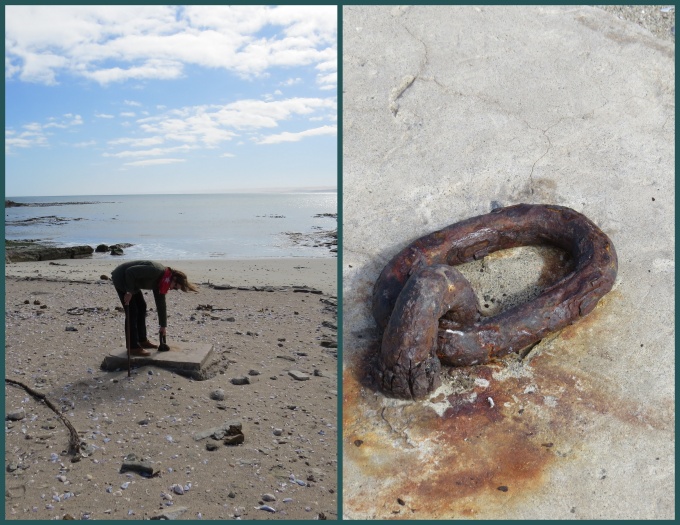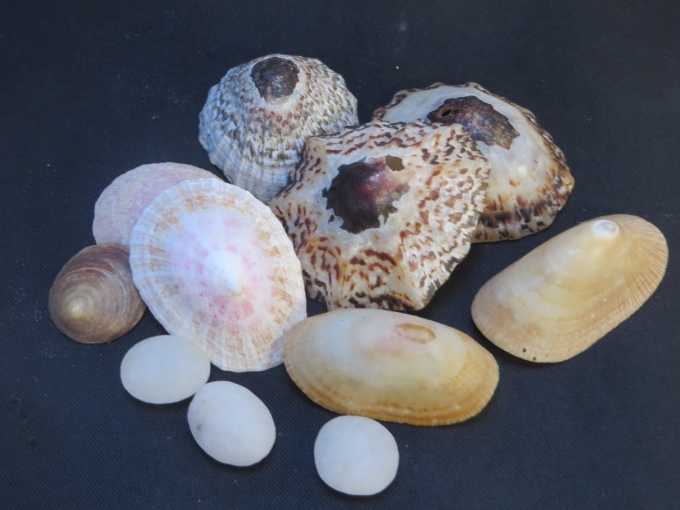Sturmvogelbucht
/An old whaling station
We drove with new friends, Doris and Ian, out to the Lüderitz peninsula again, but this time we headed up, down, over and around on bumpy 4x4 roads through the interior of the peninsula, then to the coastline for a closer look. Their knowledge of the area is outstanding and made for a fun, very informative day.
We visited Sturmvogelbucht (Storm Petrel Bay), an old whaling station used by British, American and Norwegian whalers from the late 18th to the early 20th century. They hunted for southern right and other whales … 40 known whales species have been observed in the cold waters off the Namibian coast. There were at least five whaling stations along the coast between Luderitz and Walvis Bay at one time. In fact, Walvis Bay was named Walfisch Bay … Whale Bay … because of the plethora of whales which frequented it.
The dilapidated remains of the whaling station line the beach. Huge, rusting, old boilers used to process whale blubber are dug into the sand, playing their part in the landscape now. Bright red bricks from old buildings are strewn along the beach, mixed with rubble and shells, broken bottles and beach-goers' detritus.
The old slipway is still visible and imagining the whalers attaching their catch to an old anchor ring and winching the whale ashore was not difficult.
The bay was quite calm, but the water looked cold. Evidently, this is a reasonably good swimming beach except for the water temperature which is more amenable to local Cape fur seals and African penguins. The beach, so thick with shells, crunched loudly under our feet as we walked. It was low tide and we beachcombed as gulls and oystercatchers looked on. We found all sorts of treasures: sea glass, interesting limpet shells, white quartz stones smoothed by constant ocean tumbling. Doris and I filled our pockets with them (and the sand that clung to them) like little children, proud of our loot.
We closely inspected an old whale bone, part of a skull from a humpback or a right whale, Ian figured. It was mounted on pedestal as monument to the whalers of days gone by. Whalebones are littered along the Namibian coastline also known as the Skeleton Coast. Here on the peninsula whale bones are now mostly the remains from whales that have been beached.
Life must have been hard here for the whalers, but obviously hardest for the whales that were hunted and slaughtered in great numbers. According to the Namibian Sun, in 1770, the southern right whale population was estimated to be between 55,000-70,000. Between 1788 and 1803 alone, whalers visiting the Namibian coast are believed to have killed at least 3,700 Southern Right Whales, depleting the population. By the early 20th century, there were no longer right whales spotted in Namibian waters. Right whales (northern and southern) were so named, by the way, because they were the “right” whale to hunt. They were slow, easy to kill and they stayed afloat when dead.
Since the 1982 moratorium on whale-hunting, the whales have returned and now whale-watching instead of whale-hunting is the norm in Namibia. The first right whale calf observed in Namibian waters and thought to have been born here occurred in Luderitz Bay in 2009.
Stay tuned for more exploration of the Luderitz peninsula in the next day or two … we're talking porcupine quills, a crayfish feed, shark egg cases, scat and track identification (really!), geology lessons and Bushman's candles. Don't miss out … it's just a little further.









